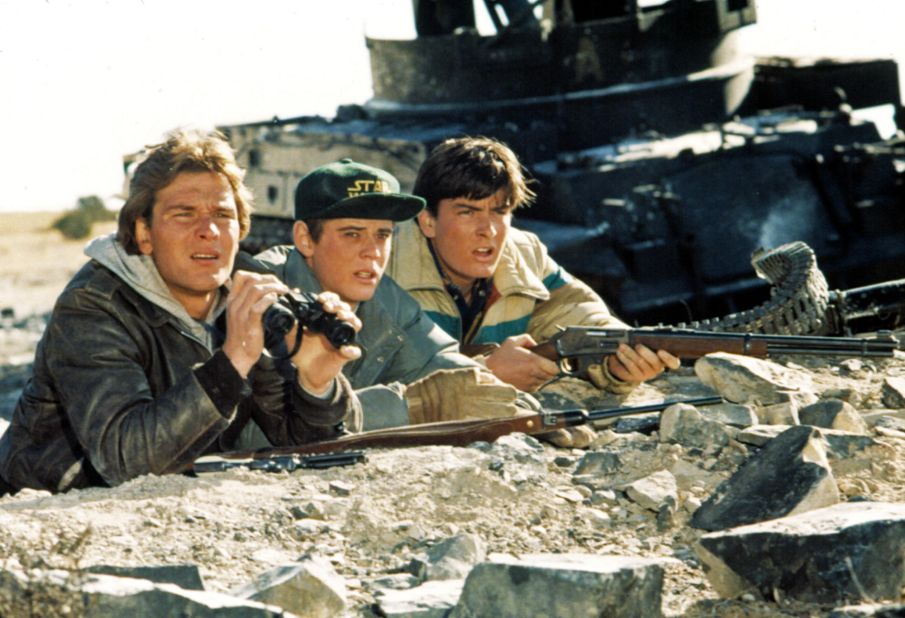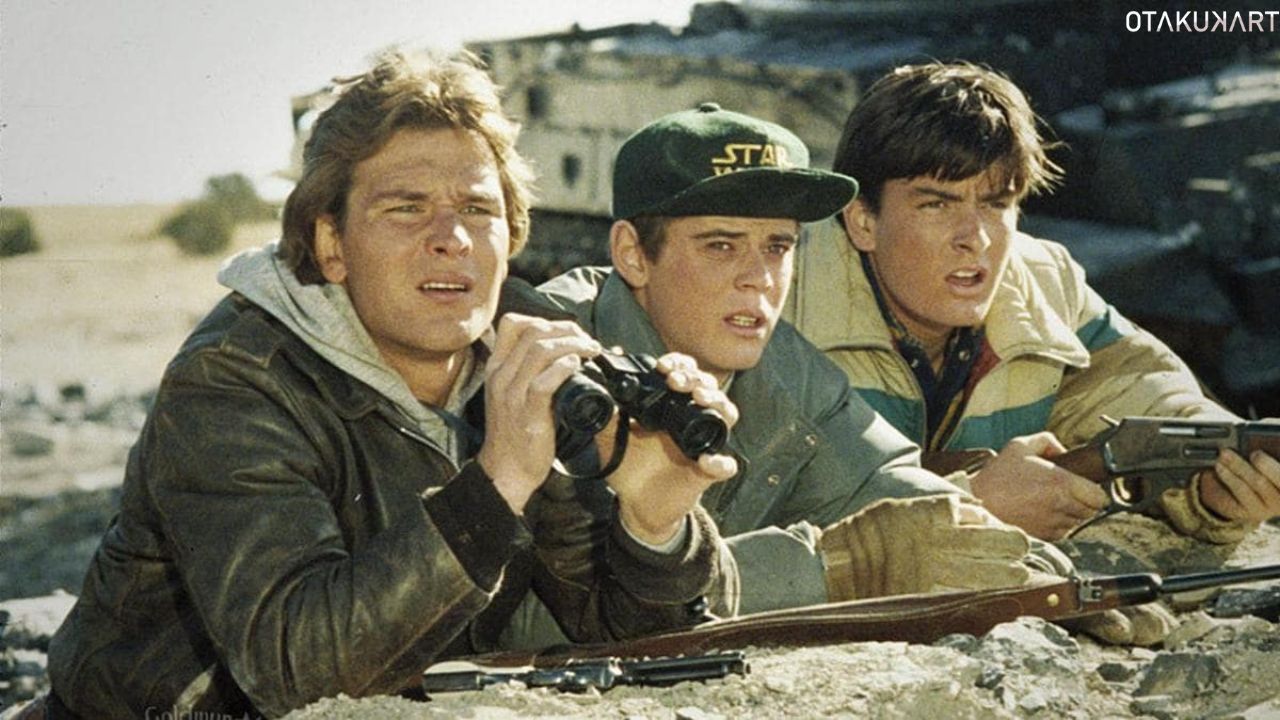Crimson Daybreak (1984): Extra Than Only a Chilly Warfare Thriller – A Cultural Artifact and a Look Again
Associated Articles: Crimson Daybreak (1984): Extra Than Only a Chilly Warfare Thriller – A Cultural Artifact and a Look Again
Introduction
On this auspicious event, we’re delighted to delve into the intriguing subject associated to Crimson Daybreak (1984): Extra Than Only a Chilly Warfare Thriller – A Cultural Artifact and a Look Again. Let’s weave fascinating info and supply recent views to the readers.
Desk of Content material
Crimson Daybreak (1984): Extra Than Only a Chilly Warfare Thriller – A Cultural Artifact and a Look Again

John Milius’s Crimson Daybreak (1984) is not only a movie; it is a time capsule. Launched throughout the top of the Chilly Warfare, it captured the anxieties and fears of a nation dealing with a perceived Soviet risk, presenting a visceral, if controversial, imaginative and prescient of a Soviet invasion of the US. Whereas its depiction of the battle has been topic to a lot debate over time, its cultural impression stays simple, making it extra than simply an motion film – it is a reflection of a particular historic second and its anxieties.
The movie follows a bunch of highschool college students in a small Colorado city who discover themselves combating for survival after a shock Soviet and Cuban invasion. Their idyllic suburban life is shattered as they witness the swift and brutal occupation of their city and the collapse of societal order. Compelled to flee into the wilderness, they kind a guerilla resistance group, the "Wolverines," named after their highschool mascot. Led by Jed Eckert (Patrick Swayze), a charismatic and decided athlete, the Wolverines make the most of their youthful ingenuity and resourcefulness to wage a determined warfare towards a seemingly insurmountable enemy.
The movie’s uncooked depth stems from its unflinching portrayal of violence. Milius does not shrink back from depicting the brutality of warfare, showcasing the casualties and the ethical ambiguities that come up in such a battle. The Wolverines will not be flawless heroes; they make errors, they undergo losses, and so they grapple with the moral dilemmas inherent of their battle. This realism, nonetheless jarring, contributes to the movie’s unsettling energy. The viewers is pressured to confront the tough realities of warfare, stripped of the sanitized portrayals usually seen in different motion movies.
Past the motion sequences, Crimson Daybreak explores themes of patriotism, survival, and the resilience of the human spirit. The Wolverines’ combat is not nearly reclaiming their city; it is about defending their lifestyle, their freedom, and their values. Their unwavering dedication to their trigger, even within the face of overwhelming odds, turns into a logo of American grit and dedication. The movie faucets right into a deep-seated sense of nationwide pleasure, a sense that resonated strongly with audiences throughout a time of appreciable geopolitical uncertainty.
Nonetheless, Crimson Daybreak‘s portrayal of the Soviet Union and its allies is undeniably simplistic and propagandistic. The Soviets are depicted as a monolithic, brutal pressure, devoid of any nuance or complexity. Their troopers are portrayed as faceless, ruthless aggressors, missing particular person company or motivation. This one-dimensional portrayal, whereas reflecting the prevailing Chilly Warfare anxieties, has been criticized for its lack of realism and its perpetuation of dangerous stereotypes. The movie’s simplistic "us versus them" narrative, whereas efficient in creating a way of urgency and rigidity, in the end simplifies the complexities of worldwide relations.
The movie’s depiction of the Cuban involvement is especially problematic. The Cubans are offered as equally ruthless and subservient to the Soviet Union, reinforcing Chilly Warfare stereotypes and neglecting the complexities of Cuban society and its relationship with the Soviet bloc. This simplistic portrayal contributed to the movie’s total controversial nature, highlighting the restrictions of its ideological framework.
Regardless of its flaws, Crimson Daybreak stays a major cultural artifact. It serves as a strong reminder of the pervasive concern and uncertainty that characterised the Chilly Warfare period. The movie’s imagery, from the ominous Soviet helicopters descending upon the unsuspecting city to the determined guerilla warfare waged by the Wolverines, grew to become deeply ingrained within the well-liked consciousness. Its impression prolonged past the massive display screen, influencing subsequent movies and tv exhibits that explored comparable themes of invasion and resistance.
The movie’s casting additionally performed a major function in its success. Patrick Swayze, on the top of his reputation, delivered a compelling efficiency as Jed Eckert, embodying the movie’s themes of management and dedication. The ensemble forged, that includes younger actors like Charlie Sheen, C. Thomas Howell, and Lea Thompson, created a plausible and relatable group of youngsters thrust into extraordinary circumstances. Their performances, mixed with Milius’s visceral route, created a movie that resonated with audiences on an emotional stage.
The movie’s soundtrack, composed by Basil Poledouris, is one other essential component contributing to its total impression. The rating completely enhances the movie’s tone, mixing patriotic themes with moments of intense drama and suspense. The music’s highly effective and memorable melodies additional enhanced the movie’s emotional impression, solidifying its place in cinematic historical past.
Crimson Daybreak‘s legacy is advanced and multifaceted. Whereas its simplistic portrayal of the Soviet Union and its allies has been rightfully criticized, its cultural impression stays simple. It captured the zeitgeist of the Chilly Warfare period, reflecting the anxieties and fears of a nation dealing with a perceived risk. The movie’s exploration of themes of patriotism, survival, and resilience continues to resonate with audiences, even many years after its launch.
Moreover, the movie’s affect on subsequent motion movies and warfare motion pictures is critical. Its depiction of guerilla warfare, its concentrate on a bunch of younger protagonists combating towards a superior pressure, and its unflinching portrayal of violence have all develop into tropes within the style. Crimson Daybreak paved the best way for a era of movies that explored comparable themes, albeit with various levels of nuance and complexity.
In conclusion, Crimson Daybreak (1984) is greater than only a Chilly Warfare motion thriller. It is a cultural artifact, a snapshot of a particular historic second, and a mirrored image of the anxieties and fears that formed a era. Whereas its simplistic narrative and propagandistic parts are simple, its impression on well-liked tradition and its exploration of common themes of survival, resilience, and patriotism proceed to make it a compelling and, at instances, unsettling cinematic expertise. Its legacy stays a topic of ongoing dialogue, prompting viewers to replicate not solely on the movie’s content material but in addition on the historic context from which it emerged. It serves as a potent reminder of the facility of cinema to replicate, and even form, the cultural panorama.








Closure
Thus, we hope this text has supplied beneficial insights into Crimson Daybreak (1984): Extra Than Only a Chilly Warfare Thriller – A Cultural Artifact and a Look Again. We hope you discover this text informative and helpful. See you in our subsequent article!